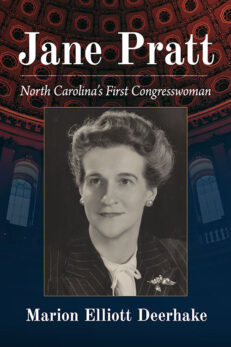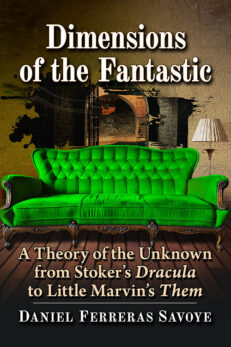Dimensions of the Fantastic
A Theory of the Unknown from Stoker’s Dracula to Little Marvin’s Them
$65.00
In stock
About the Book
Not to be confused with fantasy or the supernatural, the fantastic is in actuality its own beast and perhaps the most deeply frightening of all narrative modes. From Dracula and Nightmare on Elm Street, to Carrie and Them, the fantastic has become an ideal vehicle to denounce deep cultural dysfunctions that affect not only the way we understand reality, but also how we construct it.
This work studies the various dimensions of the fantastic mode, examining the influences of iconic authors such as H.P. Lovecraft and Jean Ray, and addressing key narrations such as Guy de Maupasasant’s The Horla and Jordan Peele’s Get Out. It explains why the fantastic is not about ghosts or monsters, but about the incomprehensible sides of our own reality, and the terrifying unknown.
About the Author(s)
Bibliographic Details
Daniel Ferreras Savoye
Format: softcover (6 x 9)
Pages: 278
Bibliographic Info: notes, bibliography, index
Copyright Date: 2023
pISBN: 978-1-4766-8930-2
eISBN: 978-1-4766-4889-7
Imprint: McFarland
Table of Contents
Acknowledgments vi
Preface: The Monster in the Keyboard 1
Introduction: The Power of the Real 3
1. On the Theoretical Front 9
2. “The Horla,” Dracula’s Older French Cousin 39
3. Dracula Inc. 51
4. Loveless Lovecraft 76
5. Harry Dickson, Detective of the Impossible 93
6. In the Zone 112
7. The X-Fantastic 137
8. King of the Fantastic 149
9. One More Nightmare 184
10. Narrating the Unacceptable 211
11. Tales of the Unthinkable 228
Conclusion: Persistence of the Fantastic 249
Chapter Notes 253
Works Cited 259
Index 267
Book Reviews & Awards
- “Bold, erudite, and well-informed, this original study maps the encounter with the fantastic across two centuries of cultural production. Stoker and Poe rub shoulders with Rod Serling and Stephen King in a tour de force that bridges accepted classics and neglected milestones of popular fiction and core texts of contemporary film and television. The entire narrative opens a window to all the key obsessions of the modern and post-modern condition: sex, death, race, identity and more.”—Nicholas J. Cull, University of Southern California





